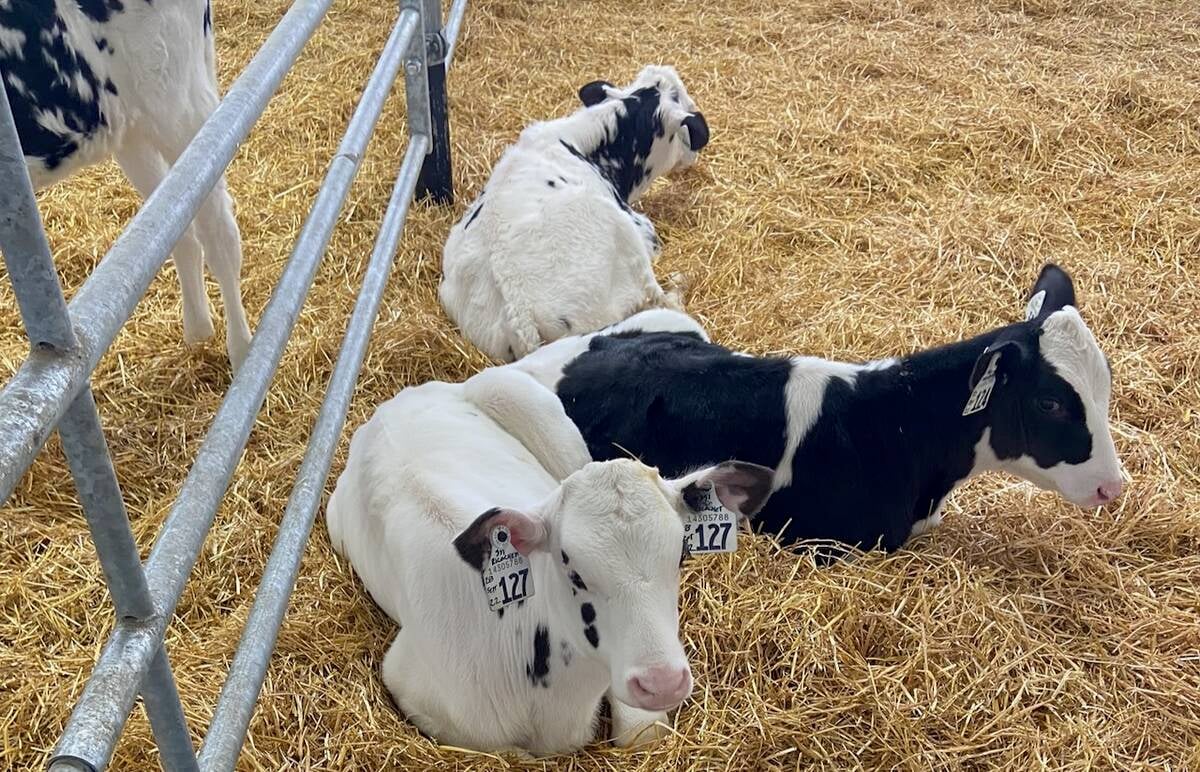If you were trying to find someone to promote your cause to the general public, it’s not likely that you’d choose someone with the nickname “Dr. Evil” and had a reputation as a high-priced lobbyist fighting in favour of smoking, junk food consumption and drinking and driving.
But that’s who the Manitoba Pork Council hired as keynote speaker for its annual meeting last week. Rick Berman, who also spoke at the Banff Pork Seminar earlier this year, is a Washington-based consultant who makes a very comfortable living indeed lobbying on behalf of unwinnable causes.
Read Also

Best tactics for dairy calf diarrhea
Scours in young livestock costs Canadian farmers big bucks. Fluids, managed antibiotics and anti-inflammatories help animals recover faster.
Organizations he’s founded include The Center For Consumer Freedom, which counters the battle against obesity, and Beverage Retailers Against Drunk Driving, which promotes “social drinking” in order to counter the efforts of Mothers Against Drunk Driving.
Mr. Berman is willing to argue gestation stalls are OK too, and says anyone who disagrees has a secret agenda to turn us all into vegetarians. He wants the pork industry to “fight back” and he’s perfectly willing to take their money to help them do it.
There may indeed be members of animal welfare groups who want everyone to stop eating meat, but that doesn’t mean that gestation stalls are humane. There is a growing, science-based consensus that there are more welfare-friendly alternatives available.
Europe and nine U.S. states have passed legislation outlawing them. The industry’s biggest customers — the likes of processors Maple Leaf, Olymel and Smithfield’s — have announced they are moving away from them. Major food-service chains, such as McDonald’s and Tim Hortons, will also abandon stalls in the not-so-distant future.
These multinational corporations have taken time to review the science both for and against gestation stalls and determined the cons outweigh the pros.
At the time they were introduced, gestation stalls were a simple solution to the complex problem of animal husbandry as the pork industry was rapidly scaling up production units. Keeping sows separate and contained enabled barn managers to prevent them from injuring one another or from weaker ones being deprived of feed.
New technology and new know-how are now available that says the same ends can be achieved while giving pregnant sows more freedom to move. The changeover is expensive, approximately $600 per sow. And the production end of the pork industry isn’t exactly rolling in cash.
But instead of seeking advice on how to communicate that need with the general public, or how to justify an increase in price to help finance the transition, the Manitoba Pork Council invited a keynote speaker that instructed them to tell consumers — their meat-eating customers — they don’t know what they’re talking about, and that anyone voicing concerns should be written off as one of those dreaded “activists.”
This when at the same meeting producers are decrying the decision by the Manitoba government not to support their latest effort at stabilizing the sector. That’s hardly the way to garner more taxpayer support.
It is sheer folly for the pork industry to spend its declining resources to hear the views of Rick Berman and his ilk. He’s telling them what they want to hear, not what they need to do.
If the current industry leaders really believe that the future of sow gestation stalls is up for debate and the likes of Rick Berman can help them win, it’s time for a change in industry leadership.
A true value chain
We were admittedly a bit skeptical when all the hype and holler about functional foods and nutraceuticals first surfaced a decade or so ago.
It’s not that they were a bad idea, just that their potential for adding value to the farm gate commodities seemed limited. These products tend to use small volumes and they are highly processed, basing their “goodness” on extracted components that are then sold at such elevated prices that only the wealthy health-conscious consumer could afford them.
But thanks to an ingenious plan crafted by the people behind the Manitoba Agri-Health Research Network, we have been proven wrong. There is an avenue in which farmers can participate in the value chain that truly brings value back to the farm — albeit in non-traditional ways.
By working with grower groups, MAHRN has been able to illicit matching government dollars to invest in functional food products that make the goodness in the commodities they grow accessible to the consumer in the types of foods they already eat, whether it’s buckwheat snacks, a pulse-based pizza crust or nutritionally enhanced desserts. The royalties from the commercialization of those products flow back to the producer groups, which are then investing them into research that benefits all growers.
Now that’s a true value chain — and we’re not talking hardware.














